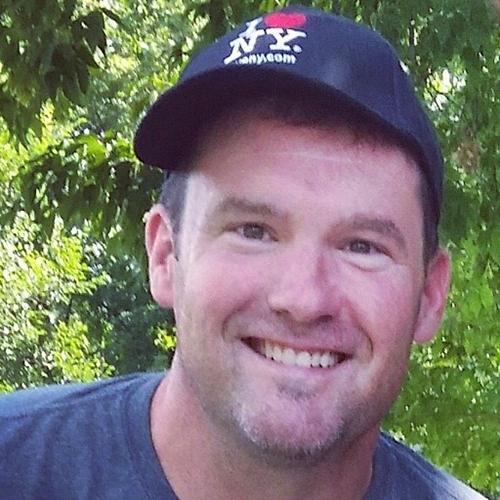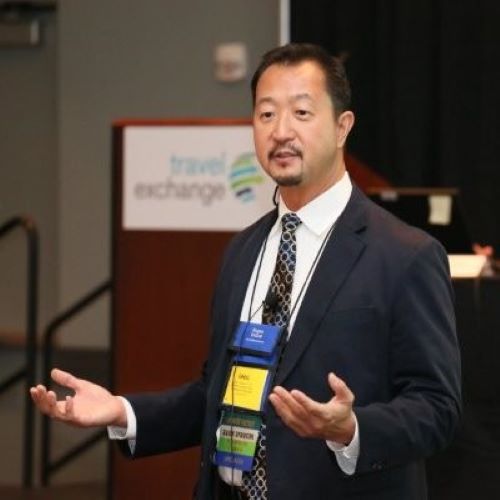Bill Sweitzer
Episode 62: Using Old-School Grassroots Marketing, with Bill Sweitzer
In this episode, you will learn about how to best implement boots on the ground, grassroots marketing efforts from Bill Sweitzer.
Bill Sweitzer joined the Canal Corporations Public Affairs Office in February of 2012, serving as Deputy Director. For the past three years, he has led the Canal Corporations marketing and education programs and spearheaded community outreach efforts across the states Canal corridor. Bill has an extensive background in hospitality, sales, and customer service and has enjoyed success through connecting with people and building relationships. Bill is from the Capital Region, he enjoys hiking and camping with his family and is an avid fisherman.
The New York State Canal Corporation, now a subsidiary of the New York Power Authority, owns and operates New York’s Canal system. The system includes four historic canals: the Erie, Champlain, Oswego, and Cayuga-Seneca. Spanning 524 miles, the waterway links the Hudson River, Lake Champlain, Lake Ontario, the Finger Lakes and Lake Erie via the Niagara River.
Dubbed the Barge Canal in 1918, today’s Canal system turns 100 years old and is now listed as a National Historic Landmark. With more than 200 communities along its shores rich in history and culture, the Canal system forms the backbone of the Erie Canalway National Heritage Corridor. The Erie Canalway Trail is a multi-use trail accommodating more than 1.5 million pedestrians, bicyclists, and cross-country skiers on an annual basis. Three-quarters of the 365-mile Erie Canalway Trail from Albany to Buffalo is a dedicated off-road trail, much of it along the canals former towpath.
Other off-road sections will be completed as part of Governor Cuomo’s Empire State Trail initiative, which will include the Erie Canalway Trail and portions of the Champlain Canalway Trail, and at 750 miles will be the longest multi-use recreational trail network in the Nation upon its completion in 2020.
More on Bill’s Background
Wow, Bill, your bio is awesome, and we’re gonna talk a little bit more about your background. But, the bio on the Canal, how cool is that? I mean it’s a hundred years old, and listen to how long that bio reads. Thank you.
Thank you for having me. Now that I hear you read that back, I’m like, “Wow. We are really in charge of a lot.”
Yes, you are. I think that really sums it up and says it all. I can’t wait to hear more about what’s happening with this huge asset that we have here in New York State. But before we dive into some of the questions, I’d like it if you could share a little bit more about your background with our listeners. I find that when our guests do that, it offers so much more context to the conversation.
Sure. Thank you. I started out in the restaurant business many years ago, hospitality. It was customer service. If they’re there for a good meal or a good time, let’s do that. That’s what motivated me in that business. I really brought that with me to wherever I went after. I always thought the folks behind the scenes in the restaurant were the hardest workers going. I tried to bring that with me.
So, when I did take this job, I was always a networker, a communications person, and so that’s why I came to the Public Affairs Office. I was familiar with New York State and loved it, and I had traveled most of it. The New York State Thruway, at the time, ran the Canal, so it was the New York State Thruway and the Canal Corporation Public Affairs who were at Media Services, our office. It was great because I learned about the Thruway Corridor, but also the Canal Corridor.
The opportunity to become the marketing person for the canals came up a couple years into that. I remember asking, I said, “Well, what would my role be if I’m gonna be the Director of Marketing for the canals?” They said, “Well, you need to promote it. You need to promote it and go visit with the communities and the people and see how we can get more people to be here and get it on everybody’s radar.”
So, I said, “Okay. This job is to promote the eighth wonder of the world, the Erie Canal, that’s the song you learned in school,” and I said, “That’s for me.” I had a marketing background. I had, as I said, a customer service background, connecting with people, building relationships, and I thought I would have that, but what I didn’t have was maybe the down and dirty marketing tools. You know, some of the even marketing buzzwords, I’m still learning today after about five or six years.
The passion or the immediate joy that I realized was like this was gonna be the greatest job, and it was, and it still is. Marketing something that was began being built 200 years ago, and changed New York State, changed really the nation and made New York City what it was. New York City was just a small port. Boston, Baltimore, Philadelphia were the big ports at the time. Within a couple years, changed everything, made the New York City the financial capital of the world really.
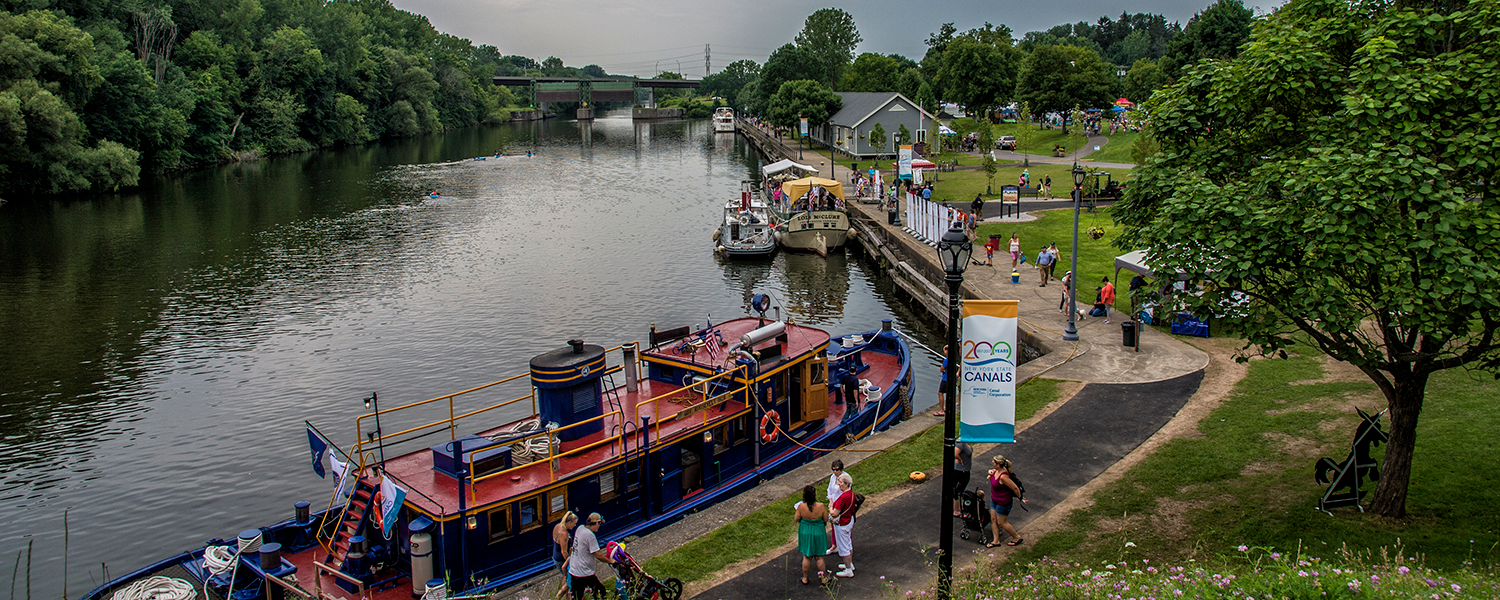
[bctt tweet=”“Within a couple years after the Erie Canal was built, it changed everything and made New York City the financial capital of the world.” – Bill Sweitzer #podcast”]
So, when I started to begin to learn all those things, I just had became more passionate, or just more energized, if you will, about it. I get that these days, you know, “Geez, you really love your job. You’re so energetic about it,” and it goes back to my sales days. It goes back to the customer service industry where I can say, “I have a good product. I can stand behind it.” If you don’t have a good product, you’re not really a good salesman, or you’ll never really have a good shtick.
It’s very, very easy to get behind this. It’s challenging because it is all those things you just said. I guess that’s it. That’s where it came out of and landed here, and I’m so happy to be here.
That’s awesome. I think your passion definitely does come through when I hear you, and I’ve heard you present about the Erie Canal. But, the fact that you have this huge asset, this really good product, you know, to basically tell the world about, I can see how that would make A) your job a lot easier, but B) your job a lot more fun, right? So, I think that’s really awesome.
Sure.
I like that you started in the restaurant industry. It’s so interesting. You never know where your path is gonna take you in life. I have two daughters, who are teenagers who work in the restaurant industry now, and who knows where they’ll end up down the path. These skills you learn at such a young age kinda build as you go through your career. I think that it’s really cool that you bring that perspective to the job as well.
The restaurant business for me, not only do you work with folks from all areas of life, you know, chefs, cooks, dishwashers, waitresses. If your restaurant, or the place you work has music, then that’s going on. But, also, the folks that come into your restaurant, it’s so diverse. If you listen and watch, and of course, do your job, there’s a lot to learn there. Just like you said about your daughters, it could launch you into anything, and it really does give you a nice starting point or platform to grow after that because you see so much.
Yeah. yeah, that’s great. What a great point, too, that if you listen and pay attention, there is a lot to learn. I think that’s really great advice.
I’m really looking forward to these questions, Bill. I know you and I have talked a little bit about them in our pre-interview chat.
Old School Marketing Tactics Still Work
We’re gonna dive right into our first topic, which is creativity and understanding that the tourism and hospitality industry is very competitive. Even though you have this asset, the eighth wonder of the world, which is a very unique asset to talk about, there’s still a lot out there and there’s a lot of noise out there. I’m wondering what you have done to stand out and to help the Erie Canal stand out from the crowd.
I’ll go back to, I didn’t take Marketing 101. So, when I was given this job, it was, “How am I gonna stand out above the crowd,” and I can talk. I hear myself saying it out in public a lot. I said, “Well, you know, I didn’t come really from that school, but I have a big mouth,” and so that’s why I’m very good at this job. It’s a 524 mile system, 360-something miles from Albany to Buffalo. You have to go out into the corridor. So, it was my mouth. Even in the day of the internet and all the technologies that are out there, I believe a lot of good can be done or information can be passed by word of mouth.
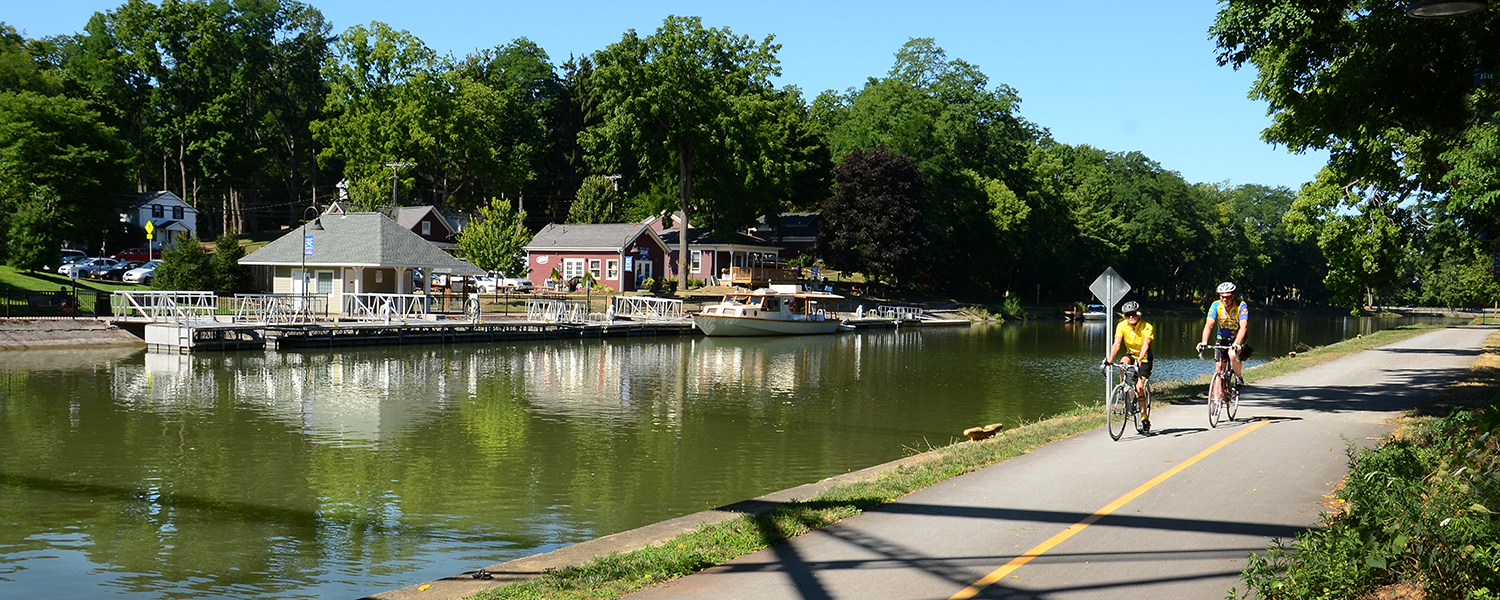
[bctt tweet=”“Even in the day of the internet and all the technologies that are out there, I believe a lot of good can be done and information can be passed by word of mouth.” – Bill Sweitzer #WhyCollaborate #podcast”]
Having said that, I would also say I’m a very good listener. If you know me, you may chuckle because I’m always talking, but, I do listen and I think that it really has helped me or maybe set me out from the crowd because the first thing I did was go learn about the system. You go into the communities and into the region that the canal goes through. Each one is different.
The Mohawk Valley is very different than the Finger Lakes. The Champlain Canal goes through the Adirondacks and the Green Mountain. Buffalo is very different from Albany. So, in all those communities in the plains, you gotta go down and sit with them and listen. I know it sounds simple, talk it up, but also listen. I think that’s really what helped me in the foundation.
I think that, that’s a really good point because you might say it sounds simple, but I think a lot of times in the digital age some of these kind of old schools techniques might get overlooked or might not be given as much credibility as they did at one time. I think you’re totally right that word of mouth is still so important. What you’re talking about is going out into the communities with your feet on the ground and actually having that face to face conversation can really go a long way, can’t it?
Exactly, exactly.
Yeah, yeah. So, can you expand on that just a little bit and just kind of go back to that listening tour, if you will, and what kinds of things were you looking for or wanting to learn, and what did you learn from that?
I knew what locks were. I was an avid fisherman, as I said in the beginning. I sat on the Oswego River and watched the boats go up and down. I knew there was locks by my house in Troy, but I didn’t ever make the connection. I knew that they lifted boats and brought them to maybe a new level or a new waterway, but I didn’t know it connected the Atlantic Ocean with the Great Lakes. I didn’t know that from Albany by boat, you could go to a Finger Lakes, or at least the two largest Finger Lakes, Seneca and Cayuga.
I didn’t know that you could take the Oswego Canal. I knew the Oswego River, but I guess it’s a canal at its river. You could take the Oswego River from the Erie Canal and go through the Great Lakes, down the Mississippi, and wind up in the Gulf of Mexico. When I started to piece it all together, and you look at a map, and you say, “Really?” There again, is the diversity of Upstate New York.
If you’re talking to a community in the Southern Adirondacks, Fort Edward or White Hawk, it’s so different than the city of Syracuse or the city of Rochester, or the small villages in and around our lift bridge section from Rochester to Buffalo. Getting there, seeing the challenges of the communities, you know, these communities were really only there because the canal was dug 200 years ago and they were commerce. They were there for business. That’s why they developed up along the canal.
There’s still commercial business going on in the canal these days, but it’s more of a recreation way. So, how are these communities reinventing themselves to get people to stop on the trail with their bikes, to get people to stop by boat? A small village with not a lot of budget, how do they make themselves a destination?
That, I believe, is part of my job as a marketing person for the Canal Corporation. These communities are reinventing themselves, and it is part of our job as the Canal Corporation to be a steward of the waterway and to help these communities reinvent themselves to make themselves a destination on the canal for boaters, for bikers. So, to get out there and listen to their challenges and listen to what help they need and point them in the right direction, and use the tourism partners across the state, that’s a little bit of my job too. So, that’s the listening part.
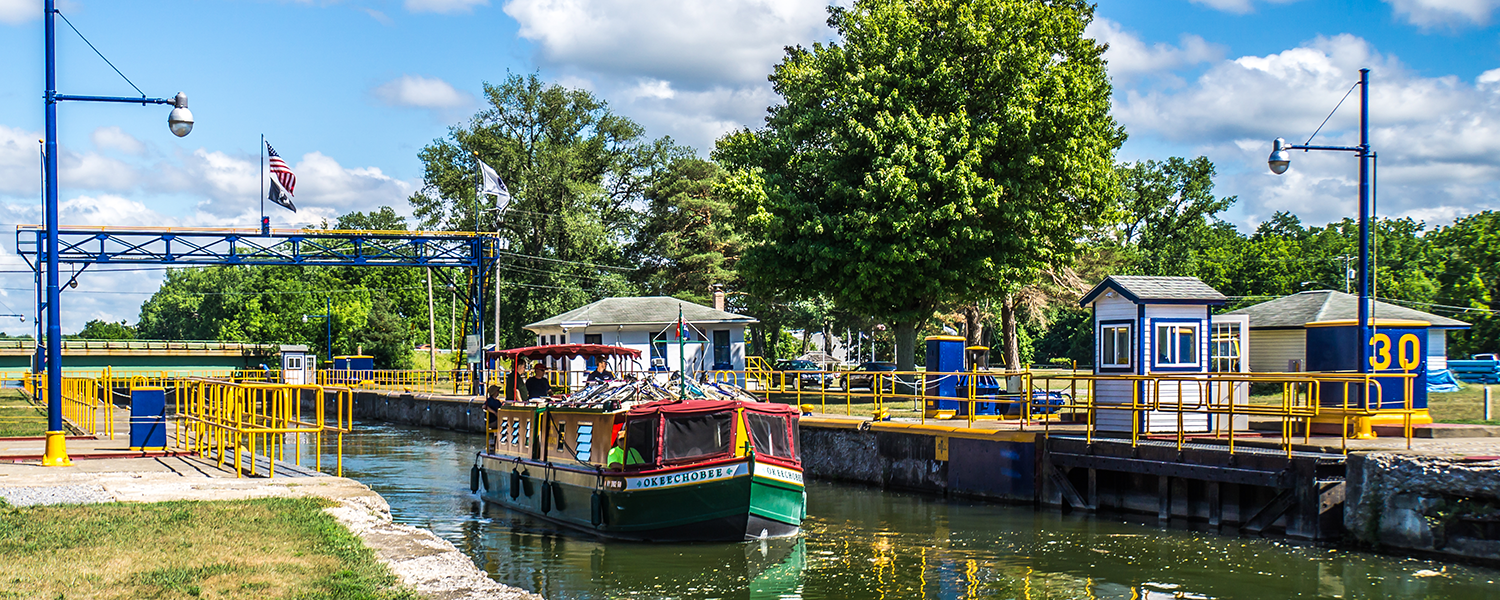
[bctt tweet=”“It is part of our job as the Canal Corporation to be a steward of the waterway and to help communities reinvent themselves to make themselves a destination on the canal for boaters and bikers.” – Bill Sweitzer #WhyCollaborate #podcast”]
That’s great. You shared so many really good nuggets of information in that answer that I just wanna make sure listeners picked up on several of them. I wanna go back to when you first started to talk about going out and doing this listening with these communities, and the learning that happened for you personally about the connectivity of the canal. I thought it was really interesting how you described watching these locks and watching boats go through the locks, but not actually realizing that, that action of what happens with those locks is action connecting that boater with another waterway and with the ability to not only go all the way across the State, but as you mentioned, to actually get themselves all the way down to the Gulf of Mexico if they really wanted to.
I think that it’s just really telling and kind of an interesting way to think about it and to look at it because it’s beyond just this pretty waterway that maybe we might recreate on. It’s this whole idea of connection and connectivity that it represents.
That’s our challenge. That’s the challenge of you take the canal for granted, or, “Sure, I know the Erie Canal. I know there’s some locks over there,” but you don’t really look at the whole system as one when maybe you drive by it on the Thruway. If you’re on the Thruway and you see the Mohawk River which is now part of the canal, and just like I said, it connects to the Gulf of Mexico, connects to the Finger Lakes.
You’re talking to somebody just outside of Rochester, “Yeah, I know the canal, but I’m kind of a lake boater.” Well, why don’t you take the canal to the two Finger Lakes? There are wineries by the water. You can pull up by dock. And, you see this expression from them, “Oh, I didn’t know that.”
My voice might be a little hoarse. We just came from the New York City Boat Show. When you have our map up there, and it shows the Hudson River and New York City, where you are standing, and you show them that you can connect to all these places, “You know, you can go to Montreal by boat.” “I’m standing here, and I can take my boat to Montreal?” “Sure, right up the Hudson River, through the Champlain Canal, through Lake Champlain, and you’re at Montreal, and then into the Canadian system.” So, it is that. You don’t know the whole of it until you really take a bite into it or put your boat in it.
Yeah. That’s really awesome. That’s very cool.
It Just Takes One Visit
So, just on the same kind of idea of creativity, one of the things that we like to explore on this podcast is the idea of creativity and how creativity kind of appears in the face of a challenge or some sort of adversity. Can you think of a time where you might’ve found a creative solution to something when you were problem-solving in that way?
Yeah. Again, a part of the challenge is, I know I just told you, how you go and sit with them and listen to those communities, but there is a challenge in that we’re a government entity. We’re State Government. I remember when I first took this job, the phone would ring and somebody would say, “Oh, wow. I got a real person,” and I’d say, “Well, of course, you did. You’re calling the folks who run the canal. What’s your question? What’s your inquiry?” That was one of those things that got me out to do that. “Hey, we’d better get out there. We’d better do that face to face.”
The challenge of being a government entity, almost versus the community, and then another one, not having a product. Not having, you know, “This is what I do. Here is my destination or multiple destinations. We connect destinations. You can dock your boat and walk to breweries and wineries. You can dock your boat, and a short drive away is beautiful New York State parks.”
So, I think trying to make those connections with people or not just saying, “Here’s what the canal is and here’s what you do when you get here.” Just being very open and you know you listen to them and you see where their interests are, and you say, “Well, you can do that too.” We don’t have a single product, but we have many, and it flows, you know, East to West, and North to South.”
I think just grasping that and taking that challenge and saying, “No, I’m not gonna let it kill me. I’m gonna go and just offer that whole thing.” It’s almost like we’re a mini I Love New York. I Love New York has to really promote the whole state. They can’t just say Broadway, and Finger Lakes, Niagara Falls, Catskills, Adirondack. You know, it’s all of that. We have that challenge in a way too because we’re so diverse.
I don’t know if I answered your question, but I took that on and said, “No, no, no, no. You know you can do that too, and here’s how you do it.”
Yeah. I think that’s a really great point because you’re not just telling the story of the canal. You’re telling the story of everything that’s around the canal and what the canal can connect you to, which is so much more than just the canal. So, I think that, that’s really cool and that’s a great example.
This is not something I did, but again, it goes back to having a great product. If you get them on the canal, your job is done because they’re gonna come back. The history, the legacy of the canal just seeps into you, and then you go through a section that is very remote and beautiful and then you pull up to a big city. You pull out of that, and it’s remote again, and there’s some quaint villages and you’re in the Finger Lakes. It is so diverse and so great. It has a little something for everybody. I don’t really have to do much. I just gotta get ’em there at once.
Right, right. That’s great.
Collaboration Between Business and Government
Well, Bill, looking into the future, are there some projects that you’re really excited about that you can share with our listeners?
Yes, for sure. 2018, it’s so confusing. The bicentennial period is upon us. They started digging the Erie Canal in 1817. So, last year in 2017 we began this bicentennial period because it took seven years to dig the canal. So, in 2025 it’ll be the 200th anniversary of the opening of the Erie Canal. But, in there, also, is the modern-day canal system, the New York State Canal System today. That is a hundred years old this year. So, we have started some pretty cool celebrations last year to celebrate the bicentennial of the beginning of the construction, and then this year it’s all about the modern day canal, or the Barge Canal, if you will.
Again, making connections, listening, and just getting out there kind of created this great relationship. One of the big thing that’s going on this year is called Glass Barge. The Corning Museum of Glass has this great canal story. 150 years ago in 1868, Corning Glass was Brooklyn Glassworks, and so they closed the doors, put everything on a barge, and floated it up the Hudson, out the canal, down to the bottom of Seneca Lake, and then through an existing canal that was back then the Chemung Canal, starting Corning Glass.
They are celebrating that this year, or recreating that this year beginning May 17th in Brooklyn. It’s gonna be a four-month tour, and it’s gonna feature live glass burn demonstrations to celebrate this. So, for us, it is this wonderful, cool, innovative canal story that’s gonna be coming up the Hudson Valley and connecting the villages and cities as it goes, and telling this great canal story.
Accompanying the Glass Barge will be the canal replica schooner, the Lois McClure, and the South Street Seaport Museum’s classic old tug, the W.O. Decker. So, there are some really cool historical pieces coming with it, but then this great brand new kind of state of the art floating glass performance barge. It’s a four-month journey beginning in Brooklyn on May 17th and ending in Watkins Glen. Then, it will go all the way out to Buffalo Canal side and then back to the Finger Lakes. The Canal Corporation is obviously partnering with them and you know you’ve been thinking of coming to the canal, well, this is the year. So, it’s gonna be pretty cool.
That is really cool. What’s so cool about that is, so many cool things about it, but that they’re recreating this journey. What a great example of exactly what the Erie Canal did for the rest of the State of New York by opening and basically offering this access to new business. For Corning, way back then 150 years ago to be able to move, which was then from Brooklyn to Corning, New York is just amazing, and then what that did for this part of the state since then.
When the bicentennial was coming upon us, they said, “Well, what should we do? How are we gonna celebrate this?” For me, you know, you always hear all these stories. It doesn’t matter how long you’ve been with the canal or around the canal, everywhere you go you hear another story. I said, “We should tell its story. That’s what we should do.” How do you make that a marketing plan, right? We’re gonna tell the stories, but there are so many. For Corning to recreate what they did through performance glass making on a barge is awesome. So, yeah. That’s the big thing for 2018. It was a signature event for us in the bicentennial year last year. In Fairport and Seneca Falls they had an all-female glassblowing team to celebrate the 100th anniversary of the woman’s right to vote in New York State. They worked out some bugs and now they know what they’re doing and it’s a four-month epic journey for us. So, very exciting.
And again, began because I said, “Wow. There’s so many museums. There’s so many historical sites up and down this corridor. Why aren’t we a member of MANY, the Museum Association of New York?” So, I started going to their meetings. I started listening to them and one day somebody said, “Hey, I have an idea. This is how we came to be, and that’s a canal story. What if we were to do that?” I said, “If you could, we’ll help you. Let’s do it,” and again, through a partnership and grabbing the right people and grabbing our tourism partners up and down the state it is a real thing and it’s right around the corner, May 17th in Brooklyn.
Yeah, that’s really awesome. That’s a perfect segway into the other topic that we’d like to focus on, on this podcast, which is this whole idea of collaboration. Talk about a collaboration with what you’re doing with Corning Museum of Glass and the Glass Barge and all those communities along the journey. One of the coolest things that I really like to explore and talk about is this idea of coopetition because so often perceived competitors, especially in travel and tourism, come together and create programs and events and things that are much bigger than what they can do on their own. I just think it’s a really cool phenomenon that happens in the travel and tour industry.
The Erie Canal, in particular, I mean that all by itself is just like a huge case study for this whole idea of coopetition and collaboration. So, I know you had these questions in advance, and I’m wondering, I’d love to hear your thoughts on that, and if it’s this example or if there’s other examples that you’ve seen where that’s really been successful.
Sure. We’re government, so we’re not in competition with anybody, right?
Correct. Sure, sure.
But, the diversity of the groups or even right down to the people who come up and down the canal, the diversity of those groups or the entities speaks to that question. There’s government agencies, towns and villages, businesses and even the Feds. Our great partner is the Erie Canal National Heritage Corridor, a division of the National Parks Service, if you will. They have a mission and they wanna promote the heritage of the canals. We need to run it. We have historians. We have marketing folks and promotion folks, but our main job is to keep the canal running, maintenance and operation. Whereas, a business, “Hey, I’m a tour boat operator. I need more people to be here. I need the Canal Corporation to do this for me,” and maybe a town or a village has other endeavors, if you will.
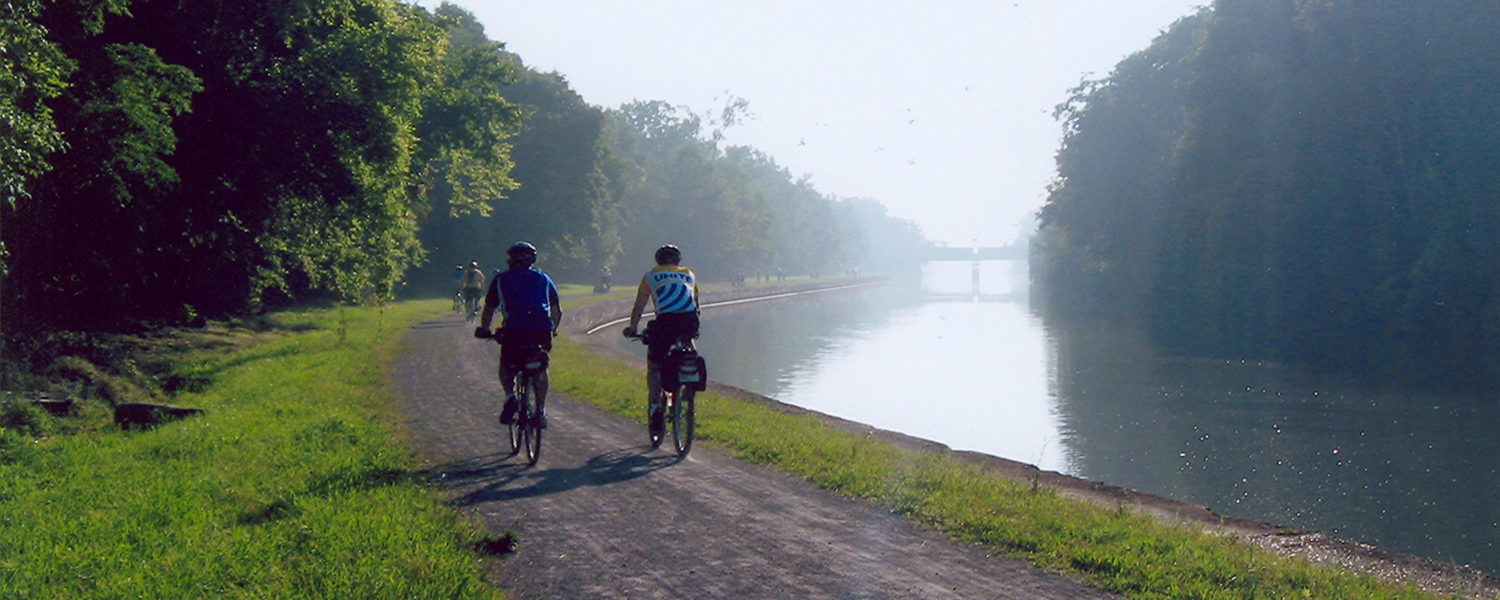
[bctt tweet=”“Our great partner is the Erie Canal National Heritage Corridor. They have a mission to promote the heritage of the canals. We at the Canal Corporations need to run it.” – Bill Sweitzer #WhyCollaborate #podcast”]
Are we in direct competition? No, no, no. I don’t think so, but we do have different goals sometimes. One of the things that I sought help with was the REDC, the Governor’s regional focus for grants. When folks in the region that needed the help were the ones that decided where the money would go, it was brilliant. That is where a government entity, State Parks, Department of State, Empire State Development for the Canals could come in and say, “Yeah. A new waterfront and a new boat launch is gonna help out the town. It’s gonna help out the business that needs the folks to stop there, but also, it’s gonna help out us ’cause the more jobs we create and the more people that come to visit our state and the amenities that they enjoy along the way, that’s our goal.”
We’ve certainly been in competition, and the challenge is we all have a little bit of a different role or endeavor, if you will. That would be my coopetition.
Yeah, coopetition. That’s right. That’s a great example, actually, because it is beyond. It’s not just about destinations collaborating or businesses collaborating. It is this whole collaboration that happens between business and government and nonprofit entities. Even the example you gave us like joining the Museums Association of New York State, and now you have this collaboration happening with Corning Museum of Glass. All of that happens because you have the right people at the table, and talking to each other.
Sure.
I think that’s a great example.
I actually have a great example. I have another great example if we have time.
Yeah, absolutely.
There was a group of folks in Central New York, really along the Old Erie Canal Trail. The Canalway Trail goes from basically Albany to Buffalo 363 miles, but there’s a 36-mile section between Rome and DeWitt that dips down below today’s canal. That’s because it follows the old alignment of the Erie Canal. That 36 miles is actually maintained by the New York State Parks, Parks and Recreation.
So, we run the canal even though it’s an abandoned part of the Old Erie Canal, we run and maintain that canal, and the trail right next to it is run by Parks. Because they’re off the main system now, some of the businesses in the groups along there got a working group together, the Old Erie Canal Community Working Group. They said, “Look, let’s get together and let’s see what we can do out here. Let’s make our little stretch of trail even better. People forget about us because we’re off the main canal now.”
After a few months, you’d look around the table and it was museum operators, small businesses, villages and towns, and State Parks, and the New York State Canal Corporation. They, in a very grassroots effort, and asking for help, and saying, “We are gonna meet here once a month and we’re gonna talk about what might be better for these and how do we get more people down here. How do we get more people off the trail and into our villages?” After a short while, you saw all these different groups working together and they created a two-day ride called Tour the Towpath that grows every year. It was part of the World Canals Conference last year.
They augmented a little bit so it would end and spill out at Syracuse during the World Canals Conference, and they are getting local waterfront revitalization grants that we did some research for, for them. It’s just a really, really great example of many different entities working together just to do what we all wanna do, and that’s make our state better, make folks that live next door come out, and make folks that live in the next state come out and visit us.
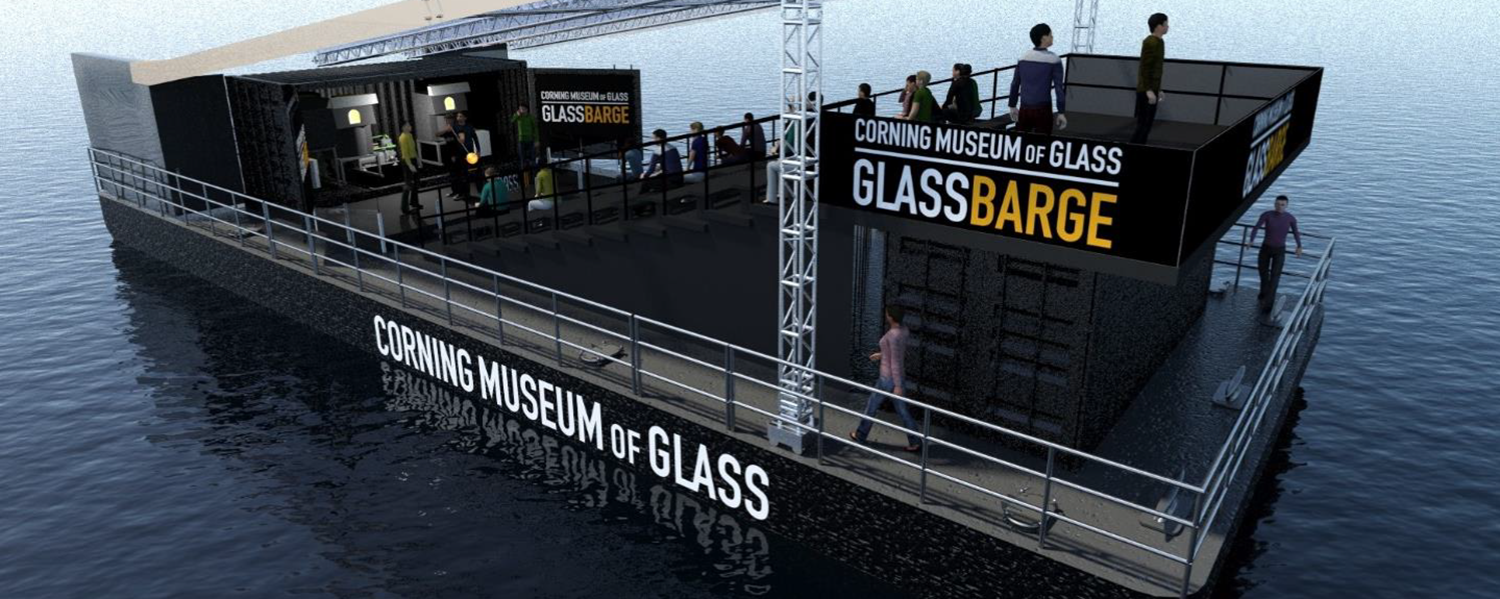
[bctt tweet=”“The grassroots effort to maintain the old Erie Canal led by the New York State Parks is a really, really great example of many different entities working together to make our state better.” – Bill Sweitzer #WhyCollaborate #podcast”]
That’s a great example. Actually, Bill, I think you just gave me the title for this episode because you just described that whole scenario, which is really a great example of the power, what can happen with collaboration. But, in doing so, you called it a grassroots effort. I think that’s really been the theme of our whole conversation here. You started with word of mouth and might sound old-fashioned, but that’s really what you’re talking about, and has been a theme through this whole conversation is this whole idea of grassroots, working together, talking to each other, in person listening, and I just think that, that’s a great way to kind of round out this conversation. That was awesome.
Yeah. Some of the challenges have led to that. The canal’s 200 years old, but it’s also very old school. A lot of the sections of the canal are semi-remote, so maybe they’re old school. Let’s put it that way. I came from say a non-marketing background, and I said, “Well, let me go out there and meet the people, listen to their challenges, and listen,” and then it’s so diverse and we don’t have one single product. It’s like, “Okay, let’s all work together,” and it is that, what you just said. The challenges have come together and said, “Well, this is the way we’re gonna do it.”
One other thing is that, you know, again, the Canal Corporation, it’s not a marketing engine. That’s not our purpose here. You know our new boss is the New York Power Authority. They generate power, but at their power vista in Buffalo and along some of the communities that their infrastructure is in, they give back to the community and they have a trail network and they do tourism, the Canal Corporation does tourism, but we’re not a tourism promotion agency. We’re not I Love New York.
So, we’re not always that great at it, and so we need those partners, right? The Erie Canal National Heritage Corridor, like I told you, the Museum Association, groups like Canal New York, The Canal Society, and so, working together with them you can get things done. It’s a sum of the parts or grassroots.
Yeah. That’s really awesome. Well, this has been an awesome conversation and I knew it would be. Before we sign off and say goodbye, is there anything else that you would like to share with our listeners that maybe you didn’t get to share yet? Any final thoughts?
We mentioned it in the beginning … the Empire State Trail. For things to come, the Erie Canalway Trail, I think 1.5 million visitors bike or walk or hike the trail per year. But, the Empire State Trail is an initiative that’s going to be completed in 2020 and it’s going to connect the Hudson River Greenway with the Canalway Trail and then extend the trail to the Canadian border. It’s going to be the longest multi-use trail in the nation, once completed. So, that’s a thing on our dashboard or on our radar that we’re working towards that all of those things we just said, you know, that the canal connected New York City almost 200 years ago, and now we’re connecting it via trail.
Bikers out of the Bronx can come up to Upstate New York and then bike on the trail that was formed by the towpath where mules pulled barges. It’s a pretty cool thing.
It is cool.
One other thing would just be we just closed out the competition for Reimagine the Canals. The New York Power Authority put up $2.5 million for Reimagine the Canals, and it is a competition just to foster economic development, make the canal even a better destination than it is, and just innovative out of the box ideas to reimagine the canals. I think there was 145 entries from all over the world really, and there is kind of a global panel that’s gonna look at that. So, that’s something that’s, again, about to be judged and finalists, I think, will be announced in March. It’s ideas from all over the world to make the canal even better than what it is today, so we’re all very excited about that and waiting for that.
Wow, that’s really cool. I’ll bet you there’ll be some really transformative projects that’ll come out of that. That’s very exciting.
That was the word I was looking for.
Well, that’s awesome. Well, thank you so much for spending some time with us today, Bill, and we’ll look forward to catching up with you again sometime.
Okay, thank you so much, Nicole. Thanks. We’ll talk to you soon.
We value your thoughts and feedback and would love to hear from you. Leave us a review on your favorite streaming platform to let us know what you want to hear more of. Here is a quick tutorial on how to leave us a rating and review on iTunes!
